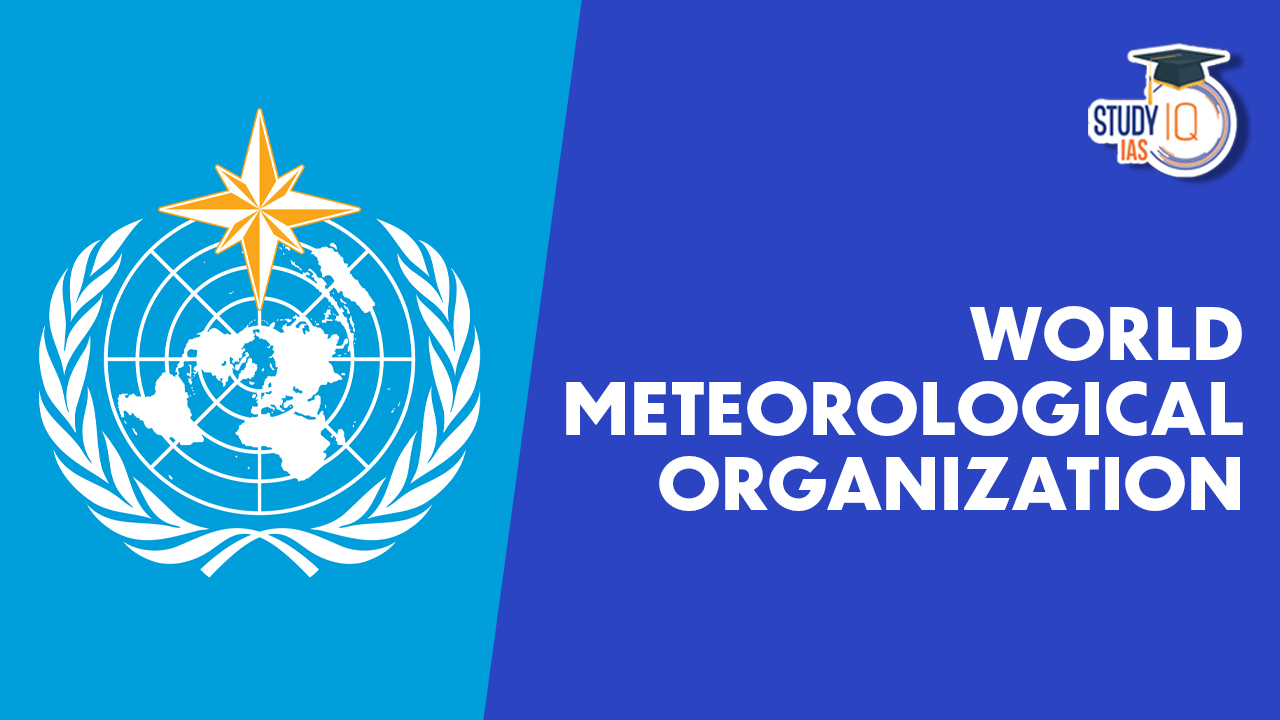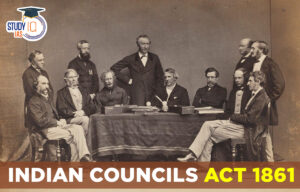Table of Contents
World Meteorological Organisation
The International Meteorological Organisation (IMO), from which the World Meteorological Organisation (WMO) emerged, was a multilateral organisation that was founded in 1950. WMO is in charge of fostering global collaboration in fields including oceanography, atmospheric chemistry, hydrology, and geophysics that deal with these topics.It was created to facilitate the exchange of research and weather data.World Meteorological Organisation (WMO) is significant in the context of the UPSC IAS Exams and is covered in the General Studies Paper 2—particularly the International Relations and Groupings portion. The World Meteorological Organisation (WMO), its members, roles, and publications will all be covered in this article.
World Meteorological Organisation (WMO)
The International Meteorological Organisation, a non-governmental organisation whose regulations were established during the 1873 Vienna International Metrological Congress, gave rise to the World Meteorological Organisation (WMO).It was established in 1873 with the goal of exchanging meteorological data and conducting research. It was created after the (WMO) convention was ratified on March 23, 1950. It was designated as the United Nations’ specialised agency for meteorology (weather and climate), operational hydrology, and geophysical sciences.
In 1951, it was elevated to the status of a specialised agency of the UN. In the year 2020, the World Meteorological Organisation will commemorate its 70th birthday. The United Nations Economic and Social Council is the parent organisation of the United Nations WMO. The World Meteorological Congress, which is led by its Secretary-General, is the apex body of the WMO. The World Meteorological Day is observed on March 23.
World Meteorological Organisation Establishment
The WMO became the United Nations’ specialised organisation for meteorology (weather and climate), operational hydrology, and associated geophysical science on March 23, 1950, when the WMO Convention was ratified.
World Meteorological Organisation Headquarters
Geneva, Switzerland, is home to the organization’s headquarters. The executive Council executes its decision, and the six regional associations are in charge of coordinating meteorological, hydrological, and all related activities within the bounds of their particular objectives.
World Meteorological Organisation Members
With 193 member states and 6 member territories, the World Meteorological Organisation promotes the “free and unrestricted” exchange of data, information, and research between its members’ hydrological and meteorological institutions.
World Meteorological Organisation Governance Structure
- The World Meteorological Organisation, which is made up of representatives from each member, is its highest authority. It meets at least every four years to create regulations and set general policy.
- An annual meeting of the 36-member Executive Council is held to enact policy.
- The Secretariat serves as the organization’s administrative hub and is led by a secretary-general who is chosen by the congress for a four-year term.
- Addressing issues specific to their regions are six regional associations and eight technical commissions.
World Meteorological Organisation: Publication/Reports
An annual report on the state of the global climate is published by the World Meteorological Organisation. The precise information regarding temperature at the local, national, and international levels as well as information on extreme weather events will be helpfully provided by this WMO report.
- Information on the long-term indicators of climate change is also available in the World Meteorological Organisation yearly report. The increase in sea levels, the amount of sea ice, and the quantity of greenhouse gases in the atmosphere are some of these indicators.
- Below are a few of the reports that the WMO has released.
- Status of World Climate
- Greenhouse Gas Bulletin.
World Meteorological Organisation (WMO) Functions
Functions of the World Meteorological Organisation can be stated as:
- Coordinating national meteorological and hydrological service operations in the participating nations. These actions are crucial because they offer the population in need access to basic climate, weather, and water services anytime they need them.
- Assuring the publication of meteorology and hydrology statistics and observations. This information is then used in a variety of other areas, including as agriculture, water management, shipping, aviation, etc.
- The WMO supports research and development in meteorology and hydrology. This is advantageous for lowering various weather-related effects and climate-related dangers. By establishing a dependable and consistent prediction, this can be accomplished. Early warning systems on storms like cyclones and tornadoes, as well as other extreme phenomena like flooding and droughts, require a solid forecast.
- Another duty of the WMO is to forecast locust swarms and the movement of different contaminants. The health of people is endangered by pollutants like harmful nuclear materials and volcanic ash. Various health risks can be prevented if their transit is discovered quickly.
World Meteorological Organisation Major Programmes
- World Weather Watch: A network of satellites and telecommunications that connects locations on land and at water and uses them to track weather
- World Climate Programme: It keeps track of climatic change, such as global warming.
- Atmospheric Research and Environment Programme: intended to encourage study of topics like ozone depletion.


 Right To Information Act, Objective, Fea...
Right To Information Act, Objective, Fea...
 Indian Councils Act 1861, History, Provi...
Indian Councils Act 1861, History, Provi...
 NCERT Books for UPSC Preparation, Check ...
NCERT Books for UPSC Preparation, Check ...





















